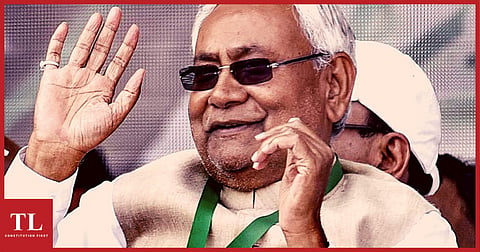

The Nitish Kumar-led NDA government in Bihar has come up with a new 'jugaad' to lessen the surge in COVID-19 cases – decreasing the daily testing rate to project lesser cases and to use it to claim that the situation is not out of control. Ironically, this is contrary to the Central Government's strategy to test more people for COVID-19.
With over 1.09 lakh active COVID-19 cases in the state as of Sunday and 97 people dead from the disease, an Oxygen crisis, the lack of proper treatment, beds and medicines in hospitals is not helping. Given the situation, the state government's latest move to decrease testing has resulted in raised eyebrows.
Sensing difficult times ahead, the Indian Medical Association's Bihar chapter has demanded that the state government impose a 15-day lockdown to control the fast spreading novel coronavirus. Heads of the four big government-run hospitals in the state, including AIIMS Patna, PMCH, NMCH and IGIMS, also demanded a lockdown.
Instead of increasing testing for COVID-19, the state government has been decreasing it day-by-day. As per the official data from the health department, the testing rate has decreased in the last six days. As per official figures, Bihar had tested 1,00,328 samples on April 27, 1,03,895 samples on April 28, and had tested 97,972 samples on April 29. The government tested 98,169 samples the next day (April 30), 95,686 samples on May 1 and 89,393 samples on Sunday.
Over the same period, according to the health department ,13,534 new COVID-19 cases were reported on Sunday. Similarly,13,789 new cases were reported on Saturday (May 1) and 15,853 new cases on Friday (April 30). On March 30 this year the state had reported only 74 cases; the increase has been manifold over the past month.
With 1,09,945 active COVID-19 cases in Bihar as on Sunday, rural areas are fully under the grip of the novel coronavirus this year, unlike during the first wave last year. COVID-19 has already claimed lives in hundreds of villages on a daily basis but the news has either been suppressed or hardly gets any space.
Due to a lack of testing facilities and basic health infrastructure in rural areas, most people with clear symptoms of COVID-19 (high fever, cough, weakness and breathlessness) have been diagnosed with typhoid or a viral flu in village after village by local self-proclaimed doctors.
What worries health experts here is the decrease in testing even after Chief Minister Nitish Kumar had publicly announced that the state would increase testing and process a lakh samples on a daily basis. "More testing is needed to detect and trace COVID-19 cases in the early stage to curb the spread of infection. We are surprised that the testing rate has decreased instead of increasing .The government should conduct more and more testing to restrict and control infection," senior IMA Bihar official Dr. Ajay Kumar said.
Another IMA official, Dr. Sunil Kumar, said the tracing cases is proving to be a big challenge and that it was only possible if more samples are collected.
However, the government has not given clarity on the break-up of testing methods being used. The official website does not mention which tests are being done in which number. An RT-PCR test is considered more of an accurate method to detect COVID-19. Health experts have repeatedly pointed out in several studies that rapid antigen tests may give false negatives.
"We cannot share anything related to different types of COVID-19 testing being done. We have been asked not to say anything about the official COVID data," a senior health official who wished anonymity, said.
The Opposition Mahagathbandhan, including Left parties, have demanded for more testing. RJD leader Tejashwi Yadav said Bihar, with an estimated population of nearly 12 crore, has been testing much lesser than expected. He has said that the state government is playing a "dangerous game" with COVID-19 testing figures. "The government has been increasing the testing rate by using rapid antigen tests instead of RT-PCR tests. It has been mainly conducting rapid antigen tests and RT-PCR tests are for name's sake," he claimed.
According to health officials, RT-PCR facilities are very limited in district headquarters and are non-functional in several parts. Of all testing, between 60% to 70% are by rapid antigen tests while only between 25% to 30% tests have been via RT-PCR, Newsclick had reported earlier.
(This article was first published by Newsclick)